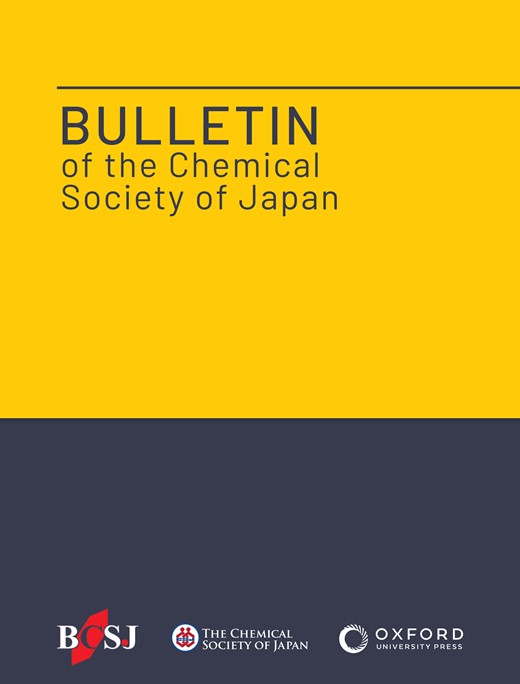-
Views
-
Cite
Cite
Hidemi Todoriki, Yoshifumi Nishimura, Shigesada Higuchi, Akiko Y Hirakawa, Masamichi Tsuboi, A Spectroscopic Study of Hydrogen-bonds Involving the 2-Thiouracil Residue, Bulletin of the Chemical Society of Japan, Volume 53, Issue 7, July 1980, Pages 1881–1887, https://doi.org/10.1246/bcsj.53.1881
Close - Share Icon Share
Abstract
Infrared absorption spectra, ultraviolet absorption spectra, phosphorescence spectra, phosphorescence lifetimes, and phosphorescence excitation spectra have been examined of 1-propyl-2-thiouracil in various solvents, including CCl4, CH3OH, CCl4+CH3OH, and CCl4+9-ethyladenine. For 1-cyclohexyluracil, and for 2-S-propyl-2-thiouracil, similar infrared spectroscopic examinations were also made. The results obtained are as follows: (1) In CCl4, the 2-thiouracil residue forms a hydrogen-bond complex with the adenine residue, in which the C4=O is involved in the hydrogen-bond. (2) The binding of 2-thiouracil and adenine is much stronger than that of 2-thiouracil and CH3OH; the 2-thiouracil·methanol binding is stronger than the uracil·methanol binding. (3) The hydrogen-bonding of the 2-thiouracil residue (with CH3OH or with adenine) causes an elevation of the lowest singlet excited state S1, which is probably an 1(nπ*), from 2.5×104 cm−1 to 2.6×104 cm−1, and the lowest triplet excited state T15 which is probably an 1(nπ*), from 2.5×104 cm−1 to 2.6×104 cm−1. (4) The hydrogen bonding of the 2-thiouracil residue causes a great enhancement of the phosphorescence intensity. On the basis of these observations, a discussion is given on the nature of the inter-base hydrogen-bonds involving 2-thiouracil residue.




